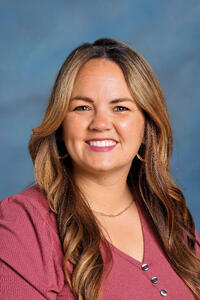Overview
Mount Horeb Area School District receives funds from Title I, Part A of the Every Student Succeeds Act (ESSA) which is a federal funding program designed to close achievement gaps and ensure that all children have a fair, equal, and significant opportunity to obtain a high-quality education. These funds are allocated to districts across the state. With these funds, schools operate either Targeted Assistance Programs or Schoolwide Programs. Mount Horeb Area School District currently operates in a Schoolwide Program model.
Schoolwide programs are designed to generate high levels of academic achievement in core subject areas for all students, especially those students most in need. Schoolwide programs serve all children in a school, and all staff, resources, and classes are part of the overall program.
Allocation of Funds
District Title I funding is currently allocated to our three elementary buildings--Early Learning Center (grade K), Primary Center (grades 1-2), and Intermediate Center (grades 3-5). Mount Horeb Area School District allocates Schoolwide Title I funds to these schools based on an early intervention model. The majority of Title I funds are used to fund 3.5 reading specialist and intervention positions. All schools receive a similar amount of FTE and Title I funds based on the number of students enrolled in a building.
Programming is determined based on a consistent delivery model between the buildings. Before the 2017-2018 school year, all three elementary buildings were targeted-assistance programs with a funding focus on literacy and reading; however, with the change to schoolwide Title, the delivery model is moving towards a push-in and co-planning model with the Title I funded teachers moving their expertise and instruction into the classroom.
Use of Student Assessment Data
Universal data collection typically occurs three times per year (September, January, May). This information is used to identify those students that may need more support, more enrichment, or different learning.
Based on universal benchmark data collection windows, students are identified for additional support in reading and mathematics. At the elementary level, students are either serviced in a “pull-out” or “push-in” model. During the 2017-2018 school year, the District began its initial efforts to move away from a “pull-out” model for the students receiving Tier 2 and Tier 3 reading services to a “push-in” model. This allows students to remain with their grade level peers in the classroom while strengthening the universal core programming. In turning to math supports, the District recently created and committed to a K-5 math interventionist position to support classroom math instruction and high student math needs.
For both literacy and mathematics, all grade-level classroom teachers follow a weekly pacing guide and universal standards-based curriculum (CKLA for literacy and Bridges in Mathematics for mathematics). All grade-level classroom teachers provide instruction on the same skills and strategies within the same week.
Dyslexia and Related Conditions
Wisconsin's Informational Guidebook on Dyslexia and Related Conditions discusses screening, instruction and intervention, and resources that can support improved learning for school-aged individuals with characteristics of dyslexia. The audience for the information is broad and includes--but is not limited to--parents and families, educators, interventionists or reading teachers, and educational leaders. The guidebook can be found here.
| 





